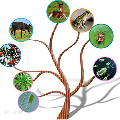Malware is being increasingly threatening and malware detectors based on traditional signature-based analysis are no longer suitable for current malware detection. Recently, the models based on machine learning (ML) are developed for predicting unknown malware variants and saving human strength. However, most of the existing ML models are black-box, which made their pre-diction results undependable, and therefore need further interpretation in order to be effectively deployed in the wild. This paper aims to examine and categorize the existing researches on ML-based malware detector interpretability. We first give a detailed comparison over the previous work on common ML model inter-pretability in groups after introducing the principles, attributes, evaluation indi-cators and taxonomy of common ML interpretability. Then we investigate the interpretation methods towards malware detection, by addressing the importance of interpreting malware detectors, challenges faced by this field, solutions for migitating these challenges, and a new taxonomy for classifying all the state-of-the-art malware detection interpretability work in recent years. The highlight of our survey is providing a new taxonomy towards malware detection interpreta-tion methods based on the common taxonomy summarized by previous re-searches in the common field. In addition, we are the first to evaluate the state-of-the-art approaches by interpretation method attributes to generate the final score so as to give insight to quantifying the interpretability. By concluding the results of the recent researches, we hope our work can provide suggestions for researchers who are interested in the interpretability on ML-based malware de-tection models.
翻译:以传统的基于签名的分析为基础的恶意软件正在变得越来越具有威胁性,恶意软件探测器在传统基于签名的分析基础上越来越具有威胁性,恶意软件探测器不再适合目前对恶意软件的检测。最近,基于机器学习(ML)的模型是用来预测未知的恶意软件变异器和节省人力的。然而,大多数现有的 ML 模型是黑箱,这使得其预先检测结果变得不可依赖,因此需要进一步解释才能在野外有效部署。本文件旨在审查和分类关于基于 ML 的恶意软件检测或可解释性的现有研究。我们首先详细比较了以往在引入原则、属性、评价内分辨器和对通用 ML 可解释性进行的共同 ML 模型的可变性模型。然后,我们调查了用于识别错误软件检测的解读方法,解决了解释错误软件探测器的重要性,解决了这些挑战的解决方案,以及用于将所有最先进的恶意软件检测可判读性数据分类的新的分类方法。我们调查的重点是,通过对以往的可判读性研究方法进行新的可判性分析,我们通过对以往的可判性进行新的可判性分析方法进行新的可判读性分析。




